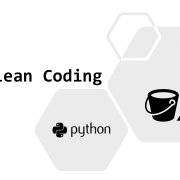What is Portfolio Risk Management in Python?
Data science is a crucial industry, with multiple processes today relying on it. One of its more helpful and intriguing applications is in investing, where it helps investors make more informed decisions. Practices like portfolio management in Python help take the guesswork out of this notoriously risky undertaking.
Investing is a complicated science, making it hard to do well. Some estimates hold that as much as 90% of people lose money in stocks. While stock trading will always involve some risk, Python-based portfolio management can help.
What Is Portfolio Management in Python?
Portfolio management is the process of planning, making and overseeing investments to meet your long-term investment goals. Portfolio management in Python uses data science to analyze risks and rewards to make the best investment decisions.
Since the future is uncertain, buying stocks is inherently risky, but some assets are riskier than others. For example, since many companies are trying to reach carbon neutrality by 2050, investing in sustainable technologies is a fairly sound strategy. However, that doesn’t guarantee that every eco-friendly startup will succeed, so investors need to consider more factors.
Some data scientists have found that you can use Python to understand these factors better. By plugging various figures into a Python equation, investors can chart potential risks and returns to find the best investments.
How Does Python Portfolio Management Work?
Portfolio risk management in Python operates on a principle called Modern Portfolio Theory (MPT). MPT helps investors find an optimal mix of high-risk, high-return investments and low-risk, low-return ones based on their risk tolerance. Investors can either look for the highest returns at a certain risk level or look for the lowest risk to get a certain return.
To apply this in Python, data scientists create one list for portfolio returns, one for risk and one for weights, or how much each investment accounts for the overall portfolio. They then randomly generate weight for the assets, then normalize it to sum to a value of one.
Data scientists then calculate the risks and returns for each asset and plug them into the different randomly generated weights. This will produce a list of various scenarios, showing how much overall risk and reward each portfolio would have.
Investors can then look at this list to see how much of each asset they should include in their portfolio. They can either use the mix that produces the greatest return or the one with the lowest risk.
Why Does It Matter?
Using Python for portfolio risk management helps remove a lot of the guesswork from investing. Running these calculations gives investors multiple scenarios to choose from, helping them find the best portfolio strategy for their needs and goals.
This presents a promising opportunity for data scientists. Data analytics are quickly becoming an essential part of the stock market. Algorithmic trading, which applies data and AI to MPT, already accounts for 60 to 73% of all U.S. equity trading. Portfolio management in Python could help more data scientists capitalize on this trend.
This practice is a relatively straightforward way to apply data science to stock trading. Data scientists that can make the most of that opportunity stand to make a name for themselves in investing circles.
Python Portfolio Management Can Maximize Returns
In the past, stock trading was almost akin to gambling, involving huge amounts of risk. While portfolio management in Python doesn’t remove volatility from the stock market, it helps put it in perspective. Investors can then make safer, more informed decisions to meet their investing goals.
Python-based portfolio management stands as a natural intersection between data science and stock trading. As a result, it can help both data scientists and investors achieve new success.










Leave a Reply
Want to join the discussion?Feel free to contribute!